Musky fishing is growing and most anglers are now dedicated to the practice of catch & release to protect these precious fish. I feel this is very important as well and will go a long way for the future of musky fishing. Please keep CPR (Catch, Photo, and Release) in mind if you decide to go out and target these fish. I will be discussing some of the basics for someone starting out for those interested in chasing this species.
Musky, they’re the so-called “fish of 10,000 casts”. A native of North America, these fish are highly sought after game fish. They are known for being a primarily northern species, located in such places as Minnesota, Wisconsin, and Canada. Musky can also be found in several other states, which include Illinois, Ohio, Kentucky, and even Tennessee.
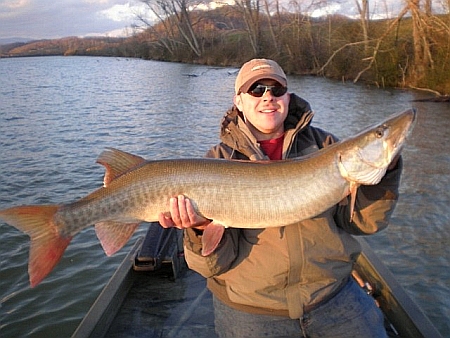
First off, you will need good tackle to target these fish. Your typical 6′ Medium action bass rod just won’t cut it. There are a growing number of manufacturers that sell a wide variety of musky rods, some of the more popular brands including St. Croix, Okuma, and Shimano. The best “all-around” combo that I would recommend to get started with would be a 7-8ft Heavy action rod (typically rated up to 6ounces). There are a few different purposes for such a long, heavy action rod.
First, you want a rod with a good backbone to get a good hook set on these fish. Musky’s mouths are very tough. Secondly, the typical baits you are throwing weigh anywhere from 1ounce up to 5-6ounces, so you need a rod that can handle those baits. And lastly, that extra length in the rod really helps for those boat-side figure 8’s.
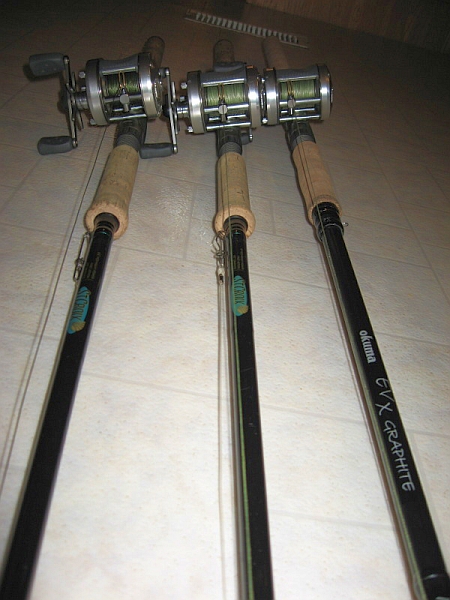
Now that you’ve got a good rod, you need to match it with a good, stout reel. Again, there are many manufacturers that offer musky sized reels, prices can vary from $75 bucks, up to well over $400 dollars. A good starter reel that I would suggest is an Abu Garcia C3 6500. For the typical weekend warrior like me, this reel holds up well for my purposes. Again, there are a ton of manufactures to choose from including Shimano, Okuma, St. Croix, and many more. It just depends on what your budget is starting out, and how much having high-quality equipment means to you. Myself, I would love to have several different $300-400 dollar reels, but my budget just won’t allow it.
Great, you’ve got a good rod & reel combo, now you need all the other tackle to go with it. This other tackle includes line, leaders, and finally baits. We’ll start with the line. The typical line of choice for most musky fishermen is braided line. Again, there are a lot of manufacturers that offer this, but a few of the most common brands is Power Pro, Suffix, Cortland, and Spiderwire. Anywhere from 50-100lb test braid is the typical size used.
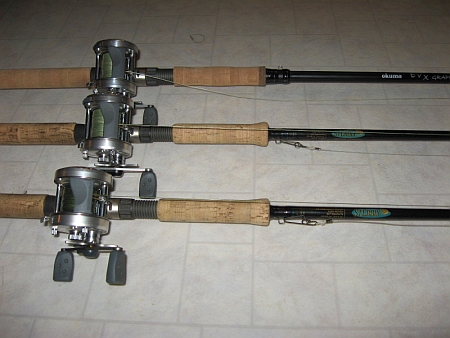
Now on to the leaders, a good leader is one of the most important things you can invest in. You don’t want to fish all day, only to hook up on one fish and it breaks off due to your bargain buy leader, do you? A lot of guys make their own leaders, and if you feel you can do this, that’s great. But the best “over-the-counter” leader I’ve heard of (and use) is Stealth Tackles fluorocarbon leaders.
These really are great, they are crimped, tied, and glue to ensure absolutely no slippage, and they use only the best leader material. These are available in from 85# test up to #150# test. Again though, there are several leaders available on the market, some guys prefer different leaders for different baits, but I find Stealth Tackles 14″ #130 test fluorocarbon leaders seem to work just fine for me.
I’m not going to get into baits too much, because I feel your bait depends on what type of lake you are fishing. Me being from Tennessee, I fish more tree lay downs and such, where-as someone from Minnesota might fish more weed beds and open water. But I will touch on a few of the most common type of baits.
Well start out with bucktails, these are probably the single most used type of musky bait anywhere. You can fish these across weeds, or you can fish these through trees. They hook well and usually hold onto the fish as well. There are literally tons of different bucktails to choose from on the market, as long as you stick with a popular brand name, you should be good with any that you choose. On top of bucktails, you have your typical “bass-like” spinnerbaits, only most of these ranges from 1-3 ounces depending on its application. Next would be jerkbaits. These include glidebaits, dive & rise baits, as well as your typical jerkbait.
A true jerkbait is typically referred to as having a small lip on the front, typically minnow shaped bait that you jerk to trigger strikes. A glidebait is just like it sounds, again…typically a fish-shaped bait, but instead of having a lip, they are neutrally buoyant and you “snap” your rod and they “glide” side to side. Then you have dive & rise baits, which again…are just like they sound. They usually have a sort of “lip” made into the body/nose of the bait, so when you jerk or pull the bait through the water, it “dives” down, then when you pause, it “rises” back up slowly, or sometimes they can suspend as well. If you need to get down deeper, you’ve got tons of crankbaits to choose from. These are typically used for a straight retrieve or for trolling. Some people also use some of the smaller (8-10inches) crankbaits more as a jerkbait, but this depends on the bait itself. Then last but not least, you have topwater lures.
There are literally dozens of different style of topwater baits to choose from. Some include your standard “cigar/walk the dog” style bait, creeper type baits, and your prop-style baits. Again, with all these baits, it all depends on what type of water you are going to be fishing. The sheer amount of “good baits” to choose from can be overwhelming when you start into musky fishing. My advice is to just buy a few baits to start out with. You can then decide what you like and what seems to work best for you.
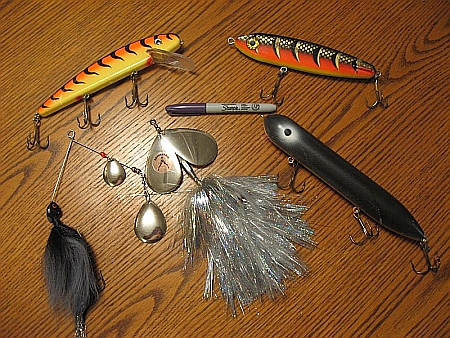
Finally, and probably the most important things you need for musky fishing is proper catch & release tools. These include a long-handled pliers, a good set of mini-bolt cutters for cutting those hard to un-hook hooks, a way of measuring your fish (bump board, measuring stick, tape measure), and finally, a nice big rubber coated landing net(Beckman, Frabil, and StowMaster all make quality musky nets). The net will not be cheap ($80+), but this will be one of your best investments. You don’t want to be wrestling with a 40+ inch musky at the side of your boat without a net. You will either hurt the fish or yourself. So please, don’t skimp on the net. The minimum size hoop I would try to find is a 32×36. Anything smaller than that will be tough to get a good size musky in it comfortably.

As I stated in this article, there is literally tons of different tackle to choose from in the musky world. I would recommend you to do some research to see what will work best for your type of fishing. A lot of this info depends on the area you are fishing in and what type of water you will be targeting. Don’t be afraid to ask some of your local fishermen for some tips. Most fishermen are usually willing to help out if they know you are just getting started with Musky fishing. Maybe think of finding a local musky club to join, these can be a great help to beginners. In closing, musky fishing can be really a lot of fun and excitement.
It may take a while to acquire all the necessary tackle at first, but stay focused. It is definitely worth it when you see your first 40+” fish following that shiny new bait to the boat. Having a Musky inhale your bait inches away from you will get your heart racing. So take all this info and get out there and make it happen!
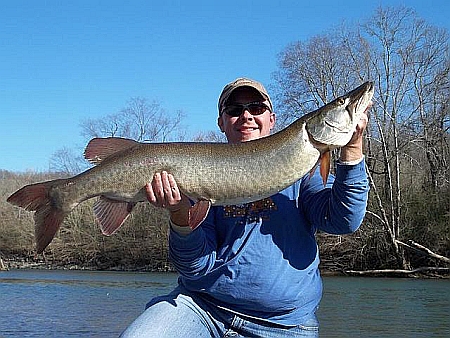
Leave a Reply
You must be logged in to post a comment.